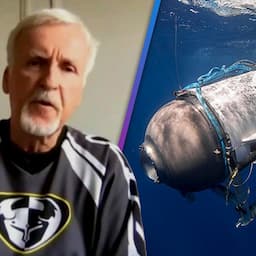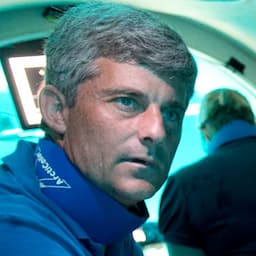The filmmaker is famously among a select few who have had the chance to see the famous wreckage with his own eyes.
As a man who has been on 33 dives down into the depths of the North Atlantic to see the infamous wreckage of the Titanic, James Cameron has a great deal of experience with the difficult and potentially dangerous process of such an adventure.
The wreckage site has once again gripped the public's attention after OceanGate Expeditions' tourist submersible, Titan, went missing on June 18 while carrying five passengers during a dive down to the Titanic's final resting place. Five days later, Rear Admiral John Mauger, the commander of the U.S. Coast Guard, announced that debris had been found from the Titan indicating a "catastrophic loss of the pressure chamber" and consistent with a "catastrophic implosion" of the vessel. All passengers of the submersible -- OceanGate CEO Stockton Rush, Pakistani-born businessman Shahzada Dawood, his 19-year-old son, Suleman, and veteran Titanic explorer PH Nargeolet -- have been presumed dead.
Following the announcement, the Oscar-winning director addressed the tragedy publicly and noted he was "struck" by its similarity to the Titanic disaster itself amid safety concerns over the Titan submersible.
"The captain was repeatedly warned about ice ahead of his ship, and yet he steamed at full speed into an ice field on a moonless night and many people died as a result," Cameron said on ABC News, "and for a very similar tragedy where warnings went unheeded to take place at the same exact site with all the diving that’s going on all around the world, I think is just astonishing. It’s really quite surreal."
According to Cameron, "This was such a preventable tragedy."
During an interview with CNN, Cameron revealed he had learned of Titan's likely deadly end days before anything was firmly announced. "The first I heard about it was on Monday morning. I immediately got on my network, because it's a very small community... and found out some information within about a half hour that they had lost comms and they had lost tracking simultaneously," Cameron said. "The only scenario that I could come up with in my mind that could account for that was an implosion."
The Avatar director explained that he "tracked down some intel that was probably of a military origin, although it could have been research -- because there are hydrophones all over the Atlantic -- and got confirmation that there was some kind of loud noise consistent with an implosion event."
"I let all of my inner circle of people know that we had lost our comrades, and I encouraged everybody to raise a glass in their honor on Monday," Cameron recalled. "Then I watched over the ensuing days this whole sort of everybody-running-around-with-their-hair-on-fire search, knowing full well that it was futile."
In the wake of the search's tragic conclusion, Cameron's own past comments about adventuring to see the wreckage may shed light on why someone might risk life and limb for a chance to lay eyes on it themselves.
According to Cameron, his iconic film about the sinking of the massive ship came about not necessarily out of a passion to make the movie itself, but more for the opportunity to explore and dive down to the wreckage -- which he described as "the Mount Everest of shipwrecks" in an interview with Playboy in 2009.
"I made Titanic because I wanted to dive to the shipwreck," Cameron told the publication, "not because I particularly wanted to make the movie."
"When I learned some other guys had dived to the Titanic to make an IMAX movie, I said, 'I’ll make a Hollywood movie to pay for an expedition and do the same thing,'" Cameron recalled. "I loved that first taste, and I wanted more."
Reflecting on his motivations for deep sea diving -- beyond his childhood love for explorers and adventurers such as Jacques Cousteau -- Cameron told The New York Times in 2011, "I can think of no greater fantasy than to be an explorer and see what no human eye has seen before."
Speaking with 60 Minutes Australia in 2018, Cameron explained the desire to explore the majesty of the Titanic and the mysteries of the deep ocean.
"I call it bearing witness," Cameron shared. "I get to bear witness to a miracle that's down there all the time."
"This is not just some, you know rich guy ego thing. This is about, you’ve got so much time on this planet, so much life, so much breath in your body. You have to do something," he continued. "If you should be fortunate enough to make some money and have some capital, some working capital, why not put it into your dream?”
Cameron has made dozens of dives to the ocean floor and even helped design a submersible to dive to the deepest area of the ocean floor -- Challenger Deep, at the southern point of the Mariana Trench.
However, the filmmaker is all too aware of the dangers that deep sea diving can pose, and how nearly impossible it might be to make it out alive if things go wrong.
While discussing the importance of properly testing the experimental submersible that successfully took him into Challenger Deep, Cameron explained, "You’re going into one of the most unforgiving places on Earth. It’s not like you can call up AAA to come get you."
RELATED CONTENT:





